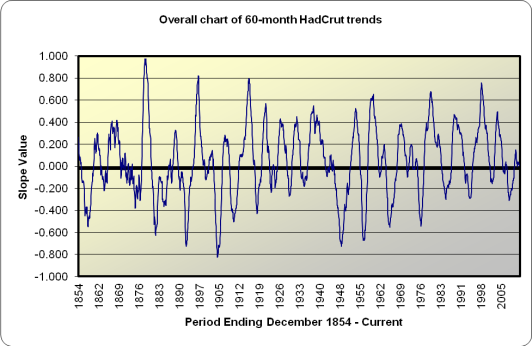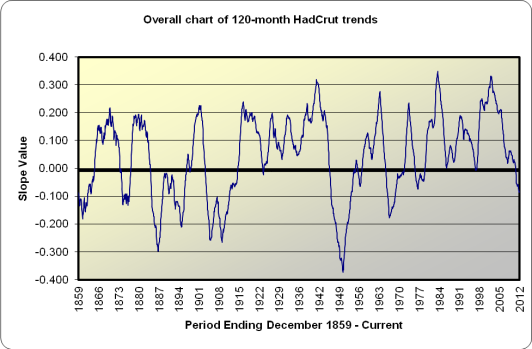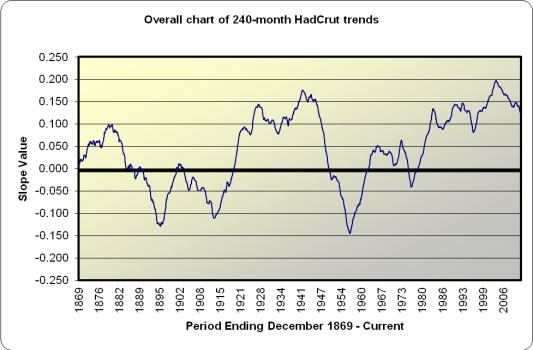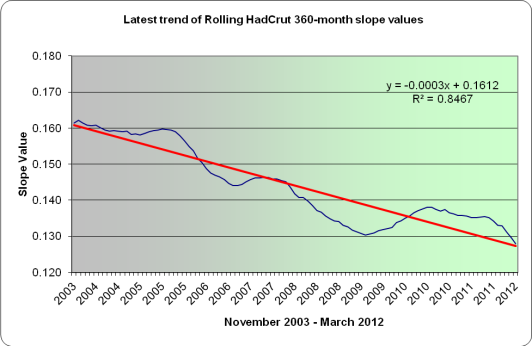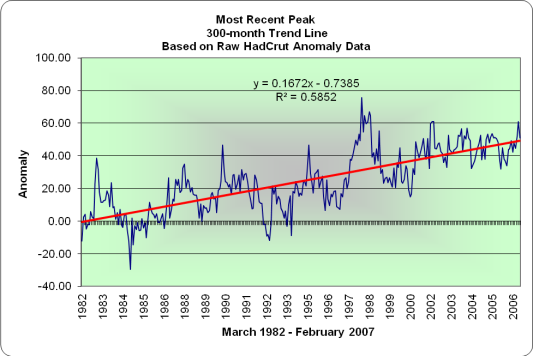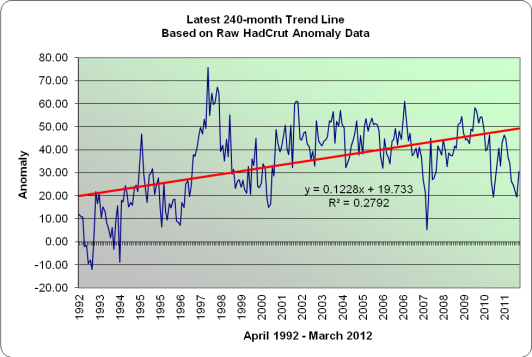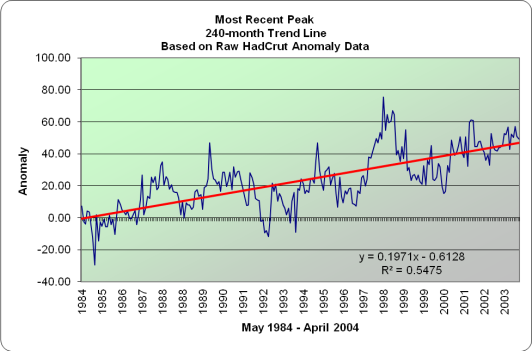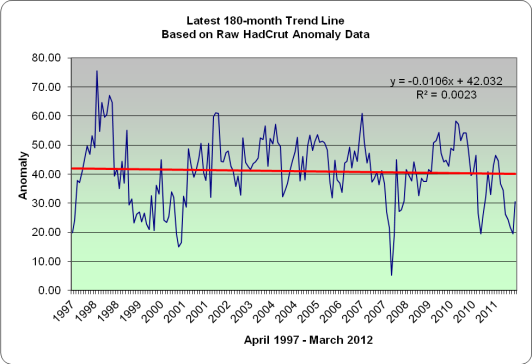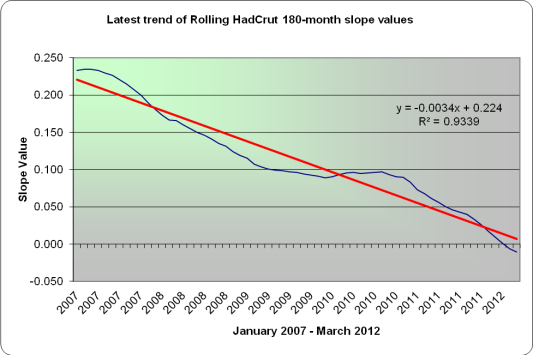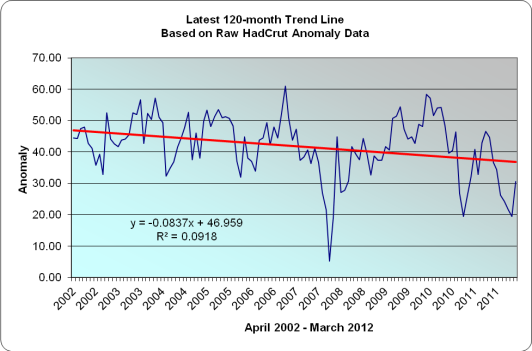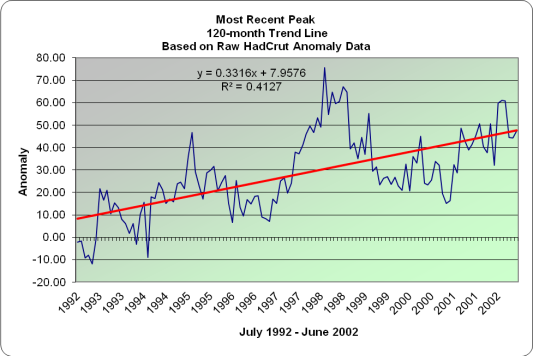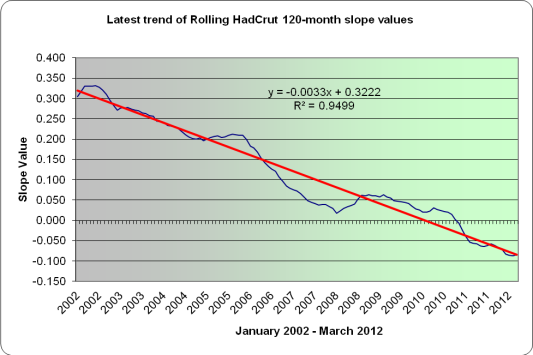I am an actuary in the insurance industry, and so receive information of all sorts that are supposed to enlighten me and assist me in my job. Whether it is a better model to use in forecasting future experience based on current trends for the purpose of pricing products, or accurate assessment of ultimate losses on current inforce products, it is imperative that I understand new advancements in predictive modeling, underlying trends, and results of different studies to most benefit my company and the customers we serve.
In this capacity, I recently came across a 97 page effort by Allianz, in partnership with – get this – the WWF (World Wide Fund for Nature), entitled “Major Tipping Points in the Earth’s Climate System and Consequences of the Insurance Sector.” As someone who wants to base pricing considerations on observed experience and modeled trends, I was curious about this paper, and how it is implied that this is to be used by the insurance industry. The report isn’t a new one, but it was the first I had run across it.
The very first line of the paper reads: “Climate change resulting from emissions of CO2 and other greenhouse gases (GHGs) is widely regarded to be the greatest environmental challenge facing the world today.”
Ominous.
Page one teaches us some interesting details. I learned that there is no global agreement or scientific consensus for delineating ‘dangerous’ from ‘acceptable’ climate change, but 2 degrees Celsius seems like a good number. The origin of that 2 degree number is not clear, but seems to be promoted based on the UNFCCC Assessment Report (AR4).
We then learn about tipping points. The theory here is that, while temperature may increase gradually, there are points where a small change can make a big difference in the system. The cited reference here is M. Gladwell, “The Tipping Point: How Little Things Can Make a Big Difference.” It is unclear to me if this is a how-to book on marriage, or something spelling out the global catastrophes to come, but apparently it’s good enough for the reinsurance industry.
Well, anyway, this is just the Executive Summary, which includes examples of Tipping Points. It appears we are talking about disasters such as effects of rise in sea levels, a shift in monsoon seasons, Amazon drought, and an overly arid Southwest U.S. No mention of comets or alien attack, so I guess we’re sticking to “things we can control.”
There is then a touching “Take Home Message” to conclude the Executive Summary. We learn that past emissions have already committed us to at least 0.6 degrees of further warming. Because we’re lazy and lackluster in our efforts to combat it, the 2-3 degrees scenario is almost certain to happen.
Ominous.
I must say, as I read the actual body of the document, I was pretty disappointed with my reinsurance brothers and sisters. We start with simply references to other works, clearly fed to them by WWF and other environmentalist groups. UN studies, IPCC papers, etc. tell us there will not be a smooth transition into warmer temperatures. This leads into the definitions and characteristics of tipping points, which – let’s be honest – insurance people will not know whether the studies they are reading are right or wrong. They’re insurance people. But in any case, it doesn’t appear that there was a serious attempt to reach out to alternative opinons on the matter. Nobody called me, which can be expected. More importantly, I don’t think Dr. Roy Spencer got a call either. I don’t even think Jeff from the Air Vent was consulted. A travesty.
Section 2 focuses on identifying tipping elements based on IPCC AR4.
On a serious note, from a reinsurance standpoint, the things they are looking at need to be considered for the purpose of understanding exposure to risk. What kind of storm activity tends to occur with changes in the ENSO amplitude? What is the exposure in the event of differences in monsoon activity around the globe? What are the insurance impacts to glaciers melting? What are the impacts of this event or that event? All legitimate questions to make sure the company can sustain viability should certain things occur that impact loss payouts. The issue I have here is putting such study in a document that doesn’t just use global warming theory as a “what if” scenario, but presents it as a given.
We then get into all sorts of scenarios around different tipping points. It’s all the same stuff: Greenland, Arctic Ice, sea level rises, the Antarctic, carbon stores in permafrost (amplified global warming, you know), and so on. Then, we get into tipping points that can tip other points, or something like that.
Section 3 highlights the greatest risks to our dismal future.
So, what am I most disappointed in? My disappointment is mainly that this is a piece of propaganda disguised as an insurance study. If it is an insurance study, it’s a horrible one, and I’d fire anyone who resented it to me as a definitive assessment. I see no industry experience and actual trends presented. It is a “study” in the sense that it covers a lot of “what if” scenarios, which is an entirely legitimate exercise, but it provides them as a near certainty as opposed to a random probabilistic event. Oh, sure, there are a lot of graphs and charts that lead one to believe that this is a rigorous study, but it is not. It is a study that has, at its basis, a complete trust in the views and conclusions of a few UN-sponsored reports and other data that is derived in its entirety from the pro-AGW side. It reeks of being a UN lapdog in anticipation of taking advantage of climate change scenarios and scare tactics for a lining of the pockets and future power grab.
The study into the “what-ifs” seems pretty sound. This part is fine, which is what I would expect from experts in the reinsurance industry, because this is what they do: they assess exposures, risks, and loss impacts GIVEN A SCENARIO IN WHICH TO ESTIMATE THAT IMPACT. This paper, however, assumes the scenario to be reality.
So, what is my analysis on why Allianz would release an otherwise legitimate exposure analysis in the form of a drivel-packed, politically correct, report?
M. O. N. E. Y.
Suppose that Allianz convinces regulators and customers alike of the need for a “loss provision due to global warming impacts” in their policies. Imagine tax advantages for surplus funds set aside for these events. Now, imagine that every future weather event can be attributed to global warming… wait… I mean, Climate Change, so that a demonstrable drawdown on “global warming reserves” reinforces the idea of human-cause impacts on the weather and storms. The propaganda becomes self-perpetuating, and ever more profitable. At some point, it is likely that all weather risk can be transferred at a guaranteed margin to a global fund to cover all climate-change related events. More conspiratorial, imagine a world of crony capitalism where those who were on the “right side” benefit disproportionately as the UN wields more power and is able to give preferential treatment to its friends with the “right” message.
This is simply Allianz seeing the future and hoping to profit from it. And to help it along, what better than to actually promote the entire idea yourself? All-in, so to speak.
Yeah, color me skeptical.
I’ve got news for everyone who wants to give reinsurers the benefit of the doubt. I’ve been in this business long enough to realize that despite all their fancy modeling and theories, they are the least rational reactionaries to risk there is. Supposedly, this price is based on long-term history until something happens, at which time your rates quadruple. Then, as competitors enter the market, they end up underpricing products. So, whatever sophistication they start with, it goes out the window in a real hurry.
But I’m sure this is different. And I’m sure they mean well.
For more fun with Allianz and climate change tipping points, check this out: http://knowledge.allianz.com/climate_tipping_points/climate_en.html
